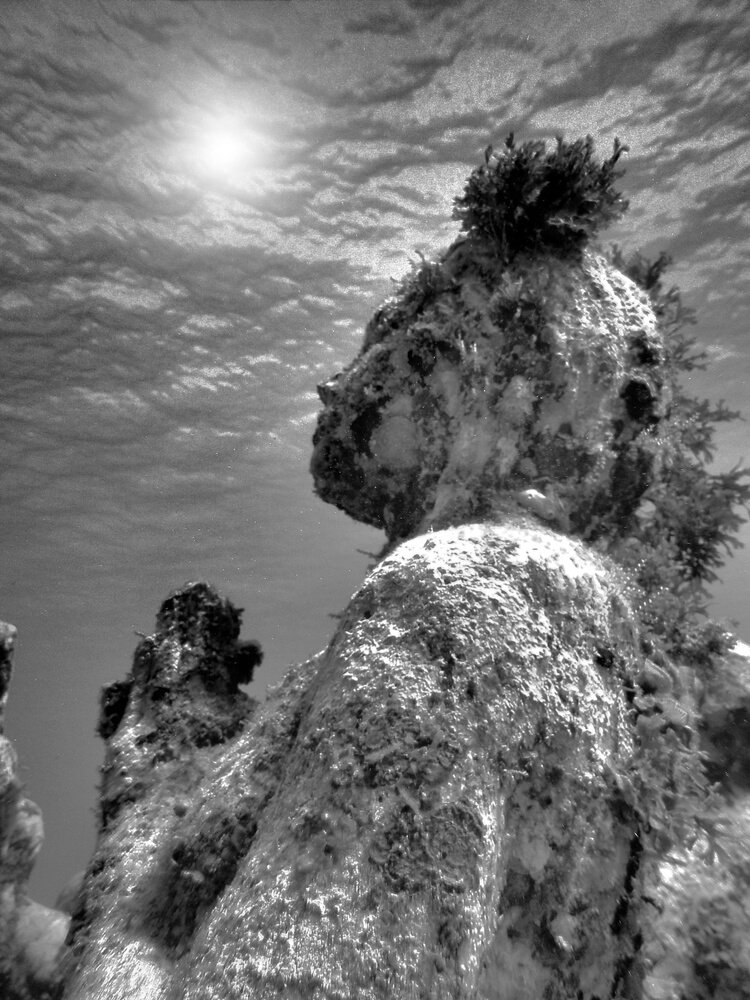An underwater sculpture garden off the coast of Cancun saves the reef from tourist traffic

Nature reserve managers Marines off the coast of Cancun in Mexico realized that the busy human traffic is harmful to the Manchunes reef. About 87,000 divers would swim in the blue reef waters a year. Divers and tourist boats bumped into the sea turtles, the angel fish, the copsinons and other inhabitants of the coral reef and scared them. After several trials and tribulations, the manager of the reserve, Jaime Gonzalez Canto, found the solution: to direct the tourists to another local attraction. He asked the British artist Jason DeCaires Taylor to create marine sculptures that would also function as an artificial reef. This underwater museum opened in 2010.
Starting the project was difficult. At first, crowds of sea urchins flocked to the plume of green algae that grew on the statues, and the tour operators demanded that the hazard be removed. González Canto took a compromise and cleaned only half of the statues. And so we learned a lesson in ecology: the sculptures that were cleaned of algae-eating hedgehogs soon returned and grew the same plant rust. In contrast, the untreated sculptures soon became covered in hard, protective layers of calcium carbonate that created communities of organisms that slowly grew beneath the algae. Gradually, therefore, the presentation was made into a tongue in tiny anfin.
Today, the exhibit includes more than 450 deep water sculptures made of porous concrete that was initially only seeded with fire coral. Since then, the sculptures began to be covered by a spectacular variety of corals and sponges with tropical fish swimming in them. The sculptures are disappearing, and a whole reef weaves skin and tendons in their place. Researchers from two Mexican universities follow the changes that occur in the sculptures over time and estimate to what extent the museum diverts the tourists from the nearby natural reef, to the sea of troubles.

"The challenge is to direct all the divers to the sculptures," says González Canto. "If we can find a successful alternative, something that will attract tourists not just for a day but for two or three days, maybe one day we can close the natural reef completely." Similar projects around the world will be able to learn from the results in Cancun.
The article is published with the approval of Scientific American Israel

One response
lovely!